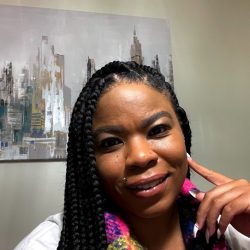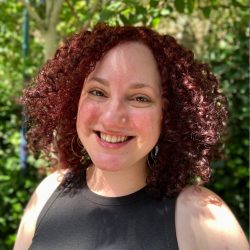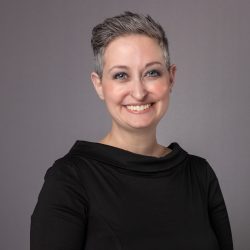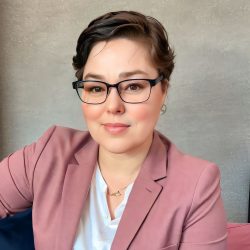
Center for Growth / Cognitive Behavioral Therapy in Philadelphia, Santa Fe, Ocean City, Mechanicsville
Cognitive Behavioral Therapy (CBT) is a prominent evidence-based therapeutic process developed by Aaron Beck in the 1960s. CBT is a form of talk therapy that has been studied and proven to be an effective therapeutic treatment for anxiety and depression, as well as many other forms of mental and emotional disorders. Persons, Burns, Perloff (1998) state that CBT is effective for patients with different levels of education, income, and background. Cognitive Behavioral Therapy is based on Beck’s description of the cognitive model. Beck stated that dysfunctional thinking is a common factor to all psychological disturbances and it influences mood and behavior. In layman’s terms, this means that a person’s emotions and behaviors are determined by how he or she perceives the world. This tenet influenced the development of the Cognitive Triad which states that a person’s thoughts, feelings, and behaviors interact and relate to one another to direct how the person views themselves, the world, and others. When used as a therapeutic process, CBT will help people with a “psychological disturbance” (i.e. anxiety or depression) to identify their dysfunctional thinking through automatic thoughts, cognitive distortions, schemas, and core beliefs, challenge the dysfunctional thinking, and in turn reduce the emotional and behavioral symptoms of anxiety and depression while teaching new and more effective coping strategies (Beck, 1995 and Needleman, 1999). This tip will help you understand the basic principles of CBT and learn how it can be used to treat common psychological disorders such as anxiety and depression.
The core principle of CBT is that we all have multiple layers of cognition that affect our dysfunctional thinking and therefore our emotions and behaviors. The most immediate layer is our Automatic Thoughts. Automatic Thoughts are quick evaluative thoughts, that spring up automatically in reaction to a negative situation. They are brief and are not result of deliberation and responding. Usually we are not aware of the automatic thoughts, but rather the emotion that follows. In working with a therapist trained in CBT, you will learn to track your moods and situations, so you can start identifying your Automatic Thoughts (Beck, 1995). As these thoughts are evaluated you and your therapist will be able to identify which schemas, the next layer, your thoughts fall into.
Schemas are categories that serve as templates or formulas through which we organize information and perceive the world (Needleman, 1999). Young (2003) identified eighteen total schemas: Emotional Deprivation, Abandonment, Mistrust/Abuse, Social Isolation, Defectiveness, Failure, Dependence, Vulnerability, Enmeshment, Subjugation, Self Sacrifice, Emotional Inhibition, Unrelenting Standards, Entitlement, Insufficient Self-Control, Approval Seeking, Negativity/Pessimism, and Punitiveness. Needleman (1999) posits that schemas can be either healthy or maladaptive. Healthy Schemas have core beliefs that are balanced and adaptive to multiple situations. People who have healthy schemas can maintain satisfying relationships because they are able to assess situations in a productive manner, assimilating and accommodating new information into their previously held beliefs. On the other hand, Needleman (1999) identifies that maladaptive schemas become activated through a “psychological disturbance” such as anxiety and depression. A CBT trained therapist will help you assimilate and accommodate new information to challenge and deactivate maladaptive schemas.
The deepest layer of cognition that CBT will help you challenge and change are core beliefs. Core beliefs are the content of schemas and the most central ideas you hold about yourself. Core beliefs are usually so deep that they are not articulated to the self or others. Core beliefs are established beginning in childhood, when people develop certain beliefs about themselves, others, and world based upon their experiences. Negative core beliefs fall into two broad categories: helplessness and unlovability. Most people will have core beliefs that fall into one category or the other, but some will have beliefs that fit both. Helplessness beliefs usually sound something like I’m a failure, or I’m defective. Unlovability core beliefs will say “I’m unworthy, or I’m bad. Negative core beliefs are usually global, over generalized, and absolute. Dysfunctional beliefs can be unlearned and reality based new beliefs can be developed and learned (Needleman, 1999). To learn more about Automatic Negative Thoughts and Core Beliefs check out this self help tip.
Now that you have the basics of CBT, let’s discuss how a Center for Growth / Cognitive Behavioral Therapist in Philadelphia ( CBT therapist) will help you challenge your negative automatic thoughts, maladaptive schemas, and core beliefs. First, a CBT therapist will assess your current situation, establish rapport and join you on your therapy journey. Then he or she will teach you the cognitive model/triad, set appropriate goals, and complete a genogram, which will include a discussion of your family and social history as well as roles, major life events, and relationships. Within a few sessions, your therapist will teach you how to complete an Automatic Thought Record, which is a form that will help you evaluate your situations, moods, and automatic negative thoughts. As you use the ATR’s you will begin to identify the Cognitive Distortions that you make automatically that perpetuate the cycle of dysfunctional thinking (Beck, 1995). Cognitive distortions are consistent errors in thinking that provide the negative basis for cognitive processing. Examples of cognitive distortions include: All-or-nothing thinking, Catastrophizing, Discounting the positive, Overgeneralziing, and Mind Reading. After identifying these cognitive distortions, you will also begin to notice which schemas you fall into and what core beliefs you hold about yourself and the world. At one point in time, your automatic thoughts, schemas, and core beliefs wee helpful to you. However, since you have been experiencing anxiety, depression, or another emotional disturbance, they have become maladaptive. Through CBT you will work collaboratively with a therapist to develop new more adaptive beliefs (Beck, 1995 & Needleman, 1999).
Throughout each session at the Center for Growth, a cognitive behavioral therapist (CBT therapist) will use various techniques to help you challenge, modify and adapt new core beliefs. These techniques include: ATR’s, mood ratings, goal setting, homework, worksheets, and behavioral experiments such as a role-play. Other techniques a CBT therapist will use are progressive relaxation, guided imagery, coping cards, exposure, activity monitoring, journaling, exercise, and Bibliotherapy (reading related books). You will also learn how to use thought stopping and substituting to break the cycle of negative thinking. These techniques will be determined based upon the specific symptoms you share with your therapist. For example, if your main source of stress is work related, your therapist will prompt discussions, assign homework, and teach behavior modification based upon your roles and tasks at work. Your therapist will continue to assess your anxiety and depression throughout the course of therapy with the mood ratings and discussions in session. “Success” when using CBT is determined by your ability to identify your dysfunctional thinking and maladaptive schemas and incorporation of new, healthier, more adaptive thoughts and beliefs (Beck, 1995 & Needleman, 1999). As you incorporate the new methods of thinking and the behavioral techniques from your CBT therapist; the negative cycle will break and your anxiety or depression should be reduced.
To speak with a live therapist call at 215-922-5683 Ext. 100 or if you prefer quietly setting yourself up for an appointment, you can self schedule an inperson or virtual therapy appointment. For your convenience we have 5 physical offices and provide virtual therapy services in Florida, Georgia, Pennsylvania, New Jersey, New Mexico and Virginia.
Ocean City Therapy Office
360 West Ave, Floor 1, Ocean City, NJ 08226Mechanicsville Therapy Office
9044 Mann Drive, Mechanicsville Virginia, 23116Society Hill Therapy Office
233 S. 6th Street, C-33, Philadelphia PA 19106Art Museum / Fairmount Therapy Office
2401 Pennsylvania Ave, Suite 1a2, Philadelphia PA 19130Santa Fe Therapy Office, 2204 B Brothers Road, Santa Fe, New Mexico, 87505
Telemedicine: We have therapists who are licensed to work in Florida, Georgia, New Jersey, Virginia New Mexico and Pennsylvania
You deserve the best therapist possible. Our special sauce for helping you achieve your goal, begins with matching you with the right therapist. Check out our GUARANTEE.
Therapy Services Offered:
Individual Counseling and therapy
Couples Counseling and marriage counseling
Teen Therapy and Adolescent Therapy and tweens and child counseling
Family Therapy and multi-generational counseling
Art Therapy and Counseling no art skills needed
ADHD Therapyand ADD, Dyslexia, Autism, Tourettes counseling
Anxiety, Panic, OCD Therapy and worry and fear support
Breaking the cycle of Codependency and being your own person
Overcoming Chronic Illness and Chronic Pain
Depression Therapy and sadness, gloom, and upset support
Grief Therapy and loss, End of A Relationship, rejections, pregnancy loss and therapy
Mindfulness Based Therapy and spirituality based therapy
Sex Therapy and sexual function & dysfunction, sex addiction, sexual orientation and gender identity support
Shame and Blame
Trauma Therapy both emotional and sexual abuse, complex trauma, PTSD counseling
Divorce support
Affairs, Infidelity, Unfaithful, Cheating counseling
Parenting therapy
Personality disorder treatments
Anger Management Therapy
Setting Boundaries and identifying ones own Core Beliefs
Just name some of the Mental Health issues that we work with. Our goal is to help you Change and Achieve Your Dreams


























